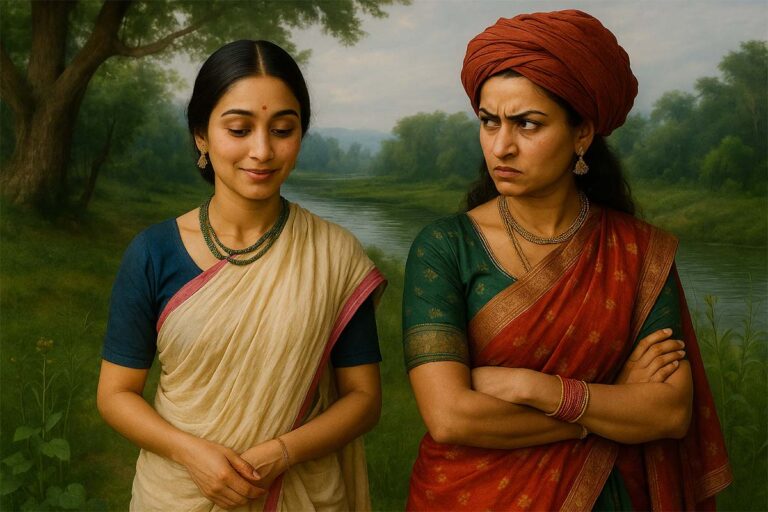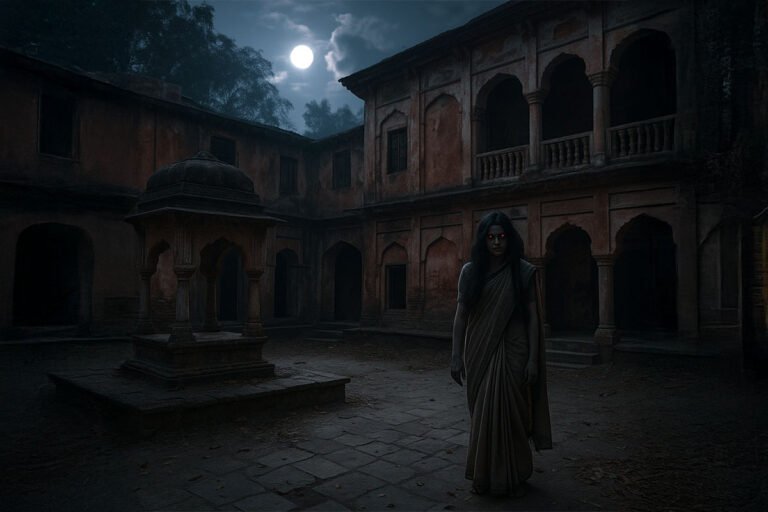Tucked away on the serene banks of the Baitarani River in Odisha’s Bhadrak district stands a temple steeped in myth, wonder, and centuries of whispered prayers. This is the sacred abode of Lord Akhandalamani, a fierce yet benevolent form of Shiva who, for locals, isn’t just a deity made of stone, he’s a living presence. A protector. A healer. A friend.
Here we journey beyond the carvings and rituals into the heartbeat of stories, passed from elder to child, priest to pilgrim, to uncover the vibrant tapestry of legends that surround the Akhandalamani Temple of Aradi.
The Bleeding Stone
Our first tale takes us back some 350 years. One day, under the rule of King Niladri Samara Singha Mohapatra, a farmer was ploughing the riverside fields when his tool struck something hard beneath the soil. What happened next is the stuff of legend — the earth bled. Yes, bled. Red liquid gushed forth, shocking everyone.
The king arrived to investigate and witnessed the bleeding stone transform into a stream of milk. Coiled atop it was a majestic cobra, its hood raised in silent protection. That very night, the king dreamt of Lord Shiva, who revealed that the stone was none other than himself, Akhandalamani — and this, his chosen place of rest.
By morning, a wooden shrine stood where the blood once flowed. Worship began. Word spread. A sacred site was born.
The Cow That Worshipped
Another version of this origin story circulates in the villages- a royal cow, day after day, would mysteriously release her milk onto a certain patch of ground. Curious herders dug beneath and found the same black stone linga, already bathed in milk. The message was clear, even animals recognized the divine. The king’s vision of Shiva that night confirmed it, and the legend lives on.
A King’s Blindness and a God’s Cure
Fast forward to the 19th century. Raja Harihara Bhanja of Kanika, plagued by incurable eye disease, came to Aradi seeking hope. He undertook a dharana — a strict vigil of prayer and fasting at the shrine. In his dream, Baba Akhandalamani appeared and revealed a herbal remedy.
The king followed the vision’s instructions, and to the astonishment of all, his eyesight returned. It was a miracle. Grateful beyond words, he vowed to build a grand stone temple for Baba.
Tragically, the king passed away before fulfilling his promise. But his queen, Satyabhama Patta Mahadei, took up the vow. She oversaw the construction of the great Akhandalamani Temple, sourcing stone from distant hills and transporting it by canal from the river Baitarani.
The Shiva Ganga tank, dug to support this effort, still lies beside the temple today — a silent, shimmering witness to a queen’s devotion and a god’s grace.
The Living God of Miracles
While temple stones may age, the faith in Baba Akhandalamani only grows stronger with each passing generation. He isn’t a memory, he’s active. Present. Believed to walk among his people. Here are just a few of the living traditions and tales that keep his spirit alive:
The Snakebite Healer
It’s said that no one who prays to Baba dies of a snakebite. Those afflicted are brought to the temple, and water from the Kundajala — the sacred tank, is given to them. Again and again, locals speak of miraculous recoveries. Baba, they say, is the great healer, or as many affectionately call him, “Vaidya Baba.”
The God Who Grants Wishes
Have a heartfelt wish? Whisper it to Baba. If it comes true, devotees return with gratitude offerings called Panchanan Mela. These rituals of thanksgiving are common and heartfelt, and the phrase “Manasika pura heba” (may your vow be fulfilled) is often spoken between hopeful pilgrims.
The Protector from Black Magic
A saying echoes through Bhadrak: “Aradi re garedi nahin.” In simple terms, black magic doesn’t work in Aradi. Sorcerers and spells crumble in Baba’s presence. Locals carry his blessed ash for protection, believing that no dark force can touch them under his watch.
The Truth-Teller’s Witness
In village disputes, people still take oaths in Baba’s name. The ritual, known as “Manika dwahi”, is sacred. Lie under this oath, and it’s believed divine justice will follow. Baba is not only a healer, but a witness to truth.
Final Words: The Jewel of Aradi
Akhandalamani — the “Indivisible Jewel.” His name glows with the same radiance as the stories that swirl around his shrine. From bleeding stones to healing dreams, from protective auras to wish-fulfilling grace, the folklore of Baba isn’t just remembered — it’s lived.
Every Mahashivaratri, the village of Aradi pulses with chants, lamps, and the scent of incense. Pilgrims pour in, seeking healing, justice, protection, or simply a whisper of the divine.
And through it all, Baba watches.
Unseen. Unforgotten.
Sources: Compiled from oral traditions, temple lore, local literature, and firsthand accounts as referenced in:
- Wikipedia
- Odisha Tourism Blog
- Reflections.live article by Dr. Tapan Kumar Panda
- Regional blogs such as Sharmistha’s “The World”
- Local publications and temple history records








